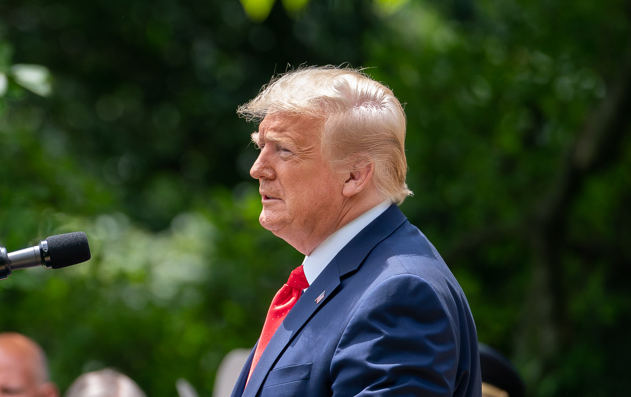President-elect Donald Trump has proposed to implement a universal baseline tariffTariffs are taxes imposed by one country on goods imported from another country. Tariffs are trade barriers that raise prices, reduce available quantities of goods and services for US businesses and consumers, and create an economic burden on foreign exporters.
on imports when he takes office. We estimate a 10 percent universal tariff would raise $2 trillion and a 20 percent universal tariff would raise $3.3 trillion from 2025 through 2034, before factoring in how the taxes would shrink the US economy. In 2025, a 10 percent universal tariff would increase taxes on US households by $1,253 on average and a 20 percent universal tariff would increase taxes on US households by $2,045 on average.
Revenue raised by tariffs would fall well short of what is needed to fully offset the revenue losses of making the expiring provisions of the 2017 TaxA tax is a mandatory payment or charge collected by local, state, and national governments from individuals or businesses to cover the costs of general government services, goods, and activities.
Cuts and Jobs Act (TCJA) permanent.
To estimate how much revenue a universal tariff raises, we start with a baseline projection of goods imports over the next decade. Imposing a tax on imports would reduce purchases of foreign-produced goods, resulting in fewer imports. We apply an import elasticity of -1 to project how imports would fall in response to a 10 percent tariff and a 20 percent tariff. How much imports shrink thus varies with the applied tariff rate, implying that doubling the rate does not double the revenue.
From there, we multiply the import tax baseThe tax base is the total amount of income, property, assets, consumption, transactions, or other economic activity subject to taxation by a tax authority. A narrow tax base is non-neutral and inefficient. A broad tax base reduces tax administration costs and allows more revenue to be raised at lower rates.
by the inclusive tariff rate (the rate divided by one plus the rate) to estimate initial customs duty revenue raised under perfect compliance before making an adjustment to reflect an 85 percent compliance rate, which represents the average tax gapThe tax gap is the difference between taxes legally owed and taxes collected. The gross tax gap in the U.S. accounts for at least 1 billion in lost revenue each year, according to the latest estimate by the IRS (2011 to 2013), suggesting a voluntary taxpayer compliance rate of 83.6 percent. The net tax gap is calculated by subtracting late tax collections from the gross tax gap: from 2011 to 2013, the average net gap was around 1 billion.
. After compliance adjustments, but before accounting for income and payroll taxA payroll tax is a tax paid on the wages and salaries of employees to finance social insurance programs like Social Security, Medicare, and unemployment insurance. Payroll taxes are social insurance taxes that comprise 24.8 percent of combined federal, state, and local government revenue, the second largest source of that combined tax revenue.
offsets, we estimate a 10 percent universal tariff would generate $2.7 trillion of customs duty revenues and a 20 percent universal tariff would generate $4.5 trillion of customs duty revenues.
The total revenue raised will be less than the customs duty revenue generated by the tariff because tariffs reduce incomes, and thus reduce income and payroll tax collections. Accounting for income and payroll tax offsets, our conventional revenue estimate finds that the 10 percent tariff would generate $2 trillion of increased revenue, while the 20 percent tariff would generate $3.3 trillion over a decade.
Because both taxes would shrink the size of the US economy, the dynamic scores are smaller: $1.7 trillion for the 10 percent tariff and $2.8 trillion for the 20 percent tariff. If foreign countries retaliate, even partially, to the US-imposed tariffs, revenue will fall further as the economy shrinks even more. For example, we estimate a 10 percent tariff on all US exports would shrink tax revenues on a dynamic basis by more than $190 billion over 10 years.
Based on the conventional revenue estimates for 2025, a 10 percent tariff would increase taxes on US households by $1,253 on average and a 20 percent tariff would increase taxes on US households by $2,045 on average.
Some policymakers may want to use the revenue generated by tariffs to offset the revenue losses from extending the expiring provisions of the 2017 Tax Cuts and Jobs Act (TCJA). Using Tax Foundation’s General Equilibrium Model, we estimate that making the individual provisions of the TCJA permanent would reduce federal tax revenue by $3.4 trillion, the estate taxAn estate tax is imposed on the net value of an individual’s taxable estate, after any exclusions or credits, at the time of death. The tax is paid by the estate itself before assets are distributed to heirs.
provisions by $200 billion, and the business tax provisions by $643 billion, for a combined $4.2 trillion revenue loss over the next decade.
Universal tariffs of 20 percent would not raise enough revenue to offset the revenue loss of individual permanence alone. But those same tariffs would cause enough economic damage, especially if met with any foreign retaliation, to offset the entire economic benefit of making the individual provisions permanent. In other words, attempting to “pay for” making the individual provisions permanent by imposing universal baseline tariffs would cause a net reduction in tax revenues and economic output, while simultaneously increasing the tax burden on lower- and middle-income taxpayers.
Lawmakers will need to pursue fiscal responsibility as they address the tax law expirations, but fiscal responsibility requires finding sound ways to pay for spending priorities. Tariffs don’t make the cut.
Stay informed on the tax policies impacting you.
Subscribe to get insights from our trusted experts delivered straight to your inbox.
Share this article
